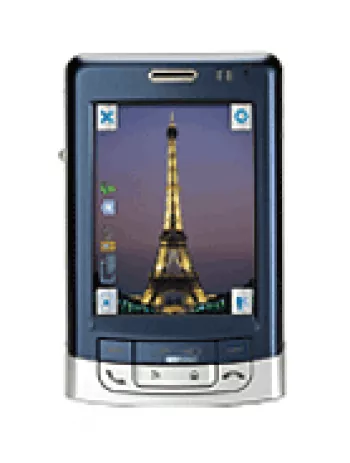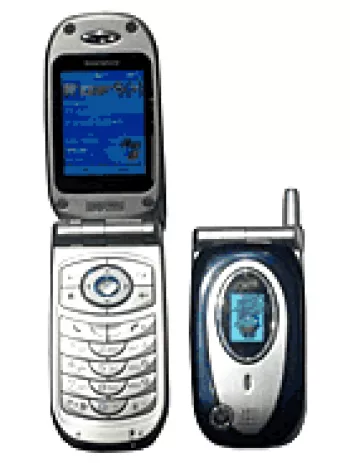
Overview of the Mitac MIO A701
The Mitac MIO A701, announced in August 2005, was a significant release in the world of personal digital assistants (PDAs) with phone functionality, combining the capabilities of a GPS device, a mobile phone, and a PDA into one. Discontinued now, it offered users a glimpse into the future potential of mobile device integration. This device stood out for its unique blend of features, positioning it as a versatile gadget for tech enthusiasts of its time.
Design and Build
The MIO A701 featured an ergonomic design with dimensions measuring 117 x 59 x 22 mm (4.61 x 2.32 x 0.87 in) and weighed 150 grams (5.29 oz). Its form factor facilitated ease of use and portability. The design included a Mini-SIM slot, reflecting the standard mobile technology of its era, while the sturdy build provided a feel of durability synonymous with electronic devices of the mid-2000s.
Display
The device was equipped with a 2.7-inch TFT resistive touchscreen, capable of displaying 65K colors. Sporting a resolution of 240 x 320 pixels in a 4:3 aspect ratio (~148 ppi density), it offered users a clear and vibrant display. The screen size and resolution were modest by today's standards but adequate for applications and usage common in the PDA era.
Operating System and Performance
Running on Microsoft Windows Mobile 5.0 PocketPC, the MIO A701 provided a user-friendly interface suitable for productivity tasks. Its performance was powered by an Intel PXA270 520 MHz CPU, delivering respectable processing capabilities for applications of the time, including organizational tools, media playback, and basic internet browsing.
Memory and Storage
The device came with 64MB of RAM and 128MB of ROM. Although the internal storage was limited, it supported MMC/SD cards up to 2 GB which allowed users to expand their storage capacity for applications, contacts, and multimedia files. This extension flexibility was critical for business professionals and tech enthusiasts who required more space beyond the built-in capacity.
Camera Features
Featuring a single 1.3 MP camera, the MIO A701 captured basic photos and videos, aligning with the multimedia demands of its time. Although rudimentary compared to modern standards, the inclusion of a camera was a valuable addition, enabling users to capture memories or document information on the go.
Network and Connectivity
Designed to operate on GSM networks, the MIO A701 supported GSM 900 / 1800 / 1900 frequency bands, catering to a broad geographic coverage for calls and messaging. It offered GPRS Class 10 but lacked EDGE capabilities. Bluetooth 1.2 was available for wireless connectivity with other devices, and its USB 1.0 port facilitated wired data transfer.
GPS and Navigation
The GPS functionality was a standout feature, powered by the SiRF Star III chipset, making the MIO A701 particularly appealing to users requiring navigation capabilities. It bridged the potential gap between PDAs and dedicated GPS devices, positioning itself as an excellent tool for travelers and professionals needing reliable navigation.
Battery Life
The device contained a removable Li-Ion 1300 mAh battery, providing up to 200 hours of standby time and up to 4 hours of talk time. This battery life was typical for the period, striking a balance between performance and portability. The removable battery feature also offered the convenience of carrying spare batteries for extended use away from chargers.
Sound and Audio
The MIO A701 included a loudspeaker and supported various alert types, including vibrations and downloadable polyphonic and MP3 ringtones. However, it did not feature a 3.5mm audio jack, indicating a reliance on speaker output or Bluetooth for audio needs. This limitation might have been a drawback for some users who preferred wired audio options.
Web and Browsing
Although lacking modern browsing capabilities, the MIO A701 provided fundamental web access through its WAP 2.0/xHTML and HTML (IE 4.0) browser. This capability was invaluable for users needing to access urgent information or engage in light browsing, despite the slower connection speeds compared to today’s standards.
Conclusion
The Mitac MIO A701 was a pioneering device at the intersection of PDAs, mobile phones, and GPS units. With a robust set of features, including a touchscreen, camera, GPS, and expandable storage, it provided a glimpse into the integrated future of mobile devices. While its capabilities are dwarfed by modern smartphones, the MIO A701 served as a critical evolution step in mobile device integration, offering functionality that resonated with the techno-savvy and professional audiences of its time.
Key Features of Mitac MIO A701
- GSM Technology with 2G bands for GSM 900 / 1800 / 1900
- Compact and lightweight with dimensions 117 x 59 x 22 mm and weight 150 g
- TFT resistive touchscreen display with 65K colors
- Powered by Microsoft Windows Mobile 5.0 PocketPC operating system
- Intel PXA270 520 MHz CPU for efficient performance
- Expandable memory with MMC/SD card support up to 2 GB
- Main camera with 1.3 MP resolution and video capability
- Bluetooth 1.2 for wireless connectivity
- Built-in GPS with SiRF Star III chipset for navigation
- Removable Li-Ion 1300 mAh battery with standby time up to 200 hours
Mitac MIO A701 Drawbacks
- Lacks EDGE support for faster data speeds.
- Discontinued status, making it difficult to find and support.
- Relatively heavy at 150g compared to modern devices.
- Small display size with low screen-to-body ratio.
- Limited internal memory with only 64MB RAM and 128MB ROM.
- No Wi-Fi capability, limiting internet connectivity options.
- Older Bluetooth version (1.2) offering slower data transfer rates.
- Non-existent selfie camera.
- Absence of a 3.5mm headphone jack.
- No built-in FM radio feature.
- Outdated operating system (Windows Mobile 5.0 PocketPC).
- Limited browser capabilities with IE 4.0.
- Short battery talk time of up to 4 hours.

View Also
More Phones
All Rights Reserved +13666 Phones © Mobilawy 2025
























